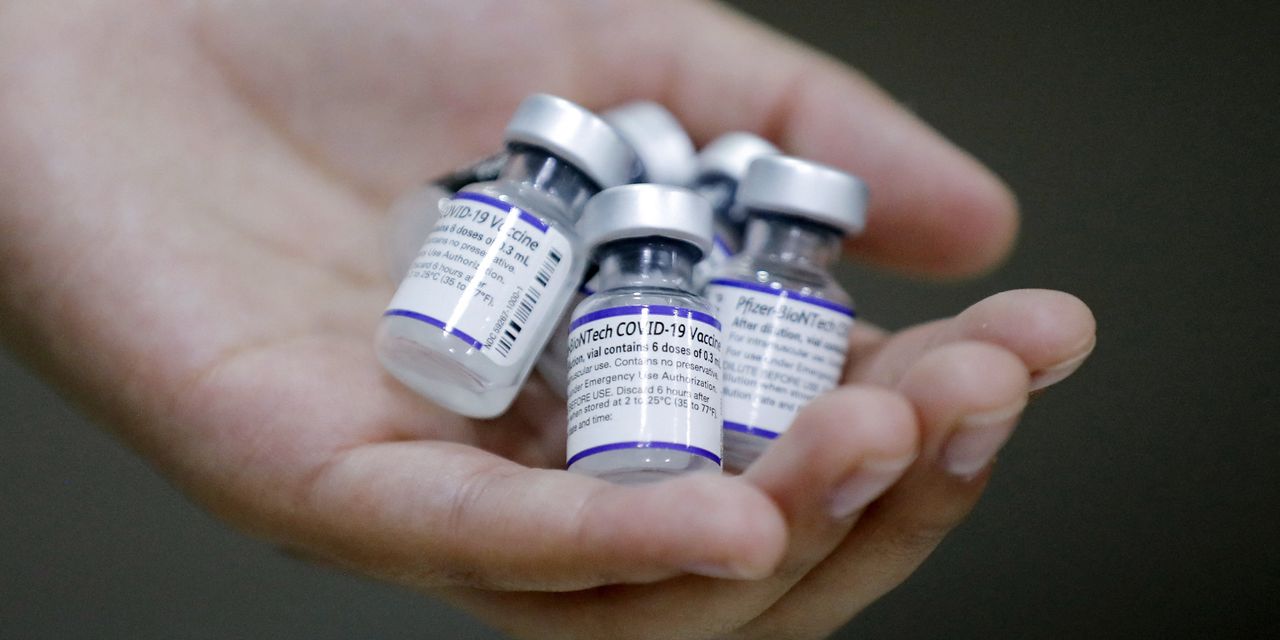The U.S. is gearing up for another wave of COVID-19 infections in the fall and winter following a flurry of activity this week that included putting billions of dollars toward more COVID-19 vaccines and treatments and setting up new rules for how to update the shots.
Here’s what happened this week:
- The Food and Drug Administration’s advisory committee on Tuesday voted in favor of updating the COVID-19 vaccines.
-
The U.S. announced Wednesday that it is paying $3.2 billion for another 105 million doses of BioNTech
BNTX,
+1.57%
and Pfizer’s
PFE,
-0.53%
COVID-19 vaccine. This includes adult and pediatric doses, set to be delivered in the fall, pending an OK from regulators. (That’s approximately 27% higher price per dose than the doses purchased by the U.S. in 2020, according to SVB Securities analyst David Risinger.)
-
Eli Lilly
LLY,
-0.81%
on Wednesday announced new updates to its purchase agreement with the U.S. government, saying it will provide another 150,000 doses of its monoclonal antibody to the U.S. for about $275 million. Lilly’s bebtelovimab is the only monoclonal antibody that still works against the new omicron subvariants. Those doses are expected to meet demand until early August.
- The FDA moved swiftly on the committee’s recommendation, telling vaccine makers on Thursday to pursue a bivalent strategy that equally targets the BA.4 and BA.5 subvariants of omicron as well as the original strain of the virus. BA. 4 and BA.5 made up more than half of U.S. cases last week.
“The speed with which this announcement followed the VRBPAC [Vaccines and Related Biological Products Advisory Committee] meeting suggests the U.S. government is still quite concerned for a fall 2022 SARS-CoV-2 variant wave,” Risinger told investors on Thursday, “and is ready to allocate budget towards preventing a spike in cases and hospitalizations that could negatively impact economic recovery.”
The U.S. is still averaging more than 100,000 new cases a day, and COVID-19 hospitalizations just reached 33,000, which is the most number of people who have been hospitalized with COVID-19 since March 8.
Public-health experts say omicron and its family of subvariants, including the currently circulating BA.4 and BA.5, have been behind the increase in infections in different parts of the U.S. ever since the omicron surge in December and January.
“We will be watching this closely as these lineages gain hold and we are projecting that they will continue to increase,” the Centers for Disease Control and Prevention’s Heather Scobie told the FDA advisory committee. “We’re not projecting or predicting that this will be a major shift in the pandemic, but we are characterizing those strains and watching closely to see what happens.”
During Tuesday’s meeting, executives at Moderna
MRNA,
Pfizer, and Novavax
NVAX,
told the FDA advisors that they could have ready BA.4 boosters by the final three months of the year. (Johnson & Johnson
JNJ,
for the record, is not planning to update its COVID-19 vaccine.)
The U.S. has not yet announced a new contract with Moderna. However, the company is moving forward with plans to continue developing a bivalent booster that targets omicron and the original strain of the virus, while also working on a bivalent booster vaccine candidate that specifically protects against BA.4 and BA.5.
Pfizer, which had recommended a monovalent approach to new boosters, says it can have a bivalent COVID-19 vaccine that targets the new subvariants and the original strain of the virus by early October.
“We believe we have a strong solution with a bivalent BA.4/BA.5 subvariant booster as we head into this next chapter of the pandemic,” a Pfizer spokesperson said Thursday.
